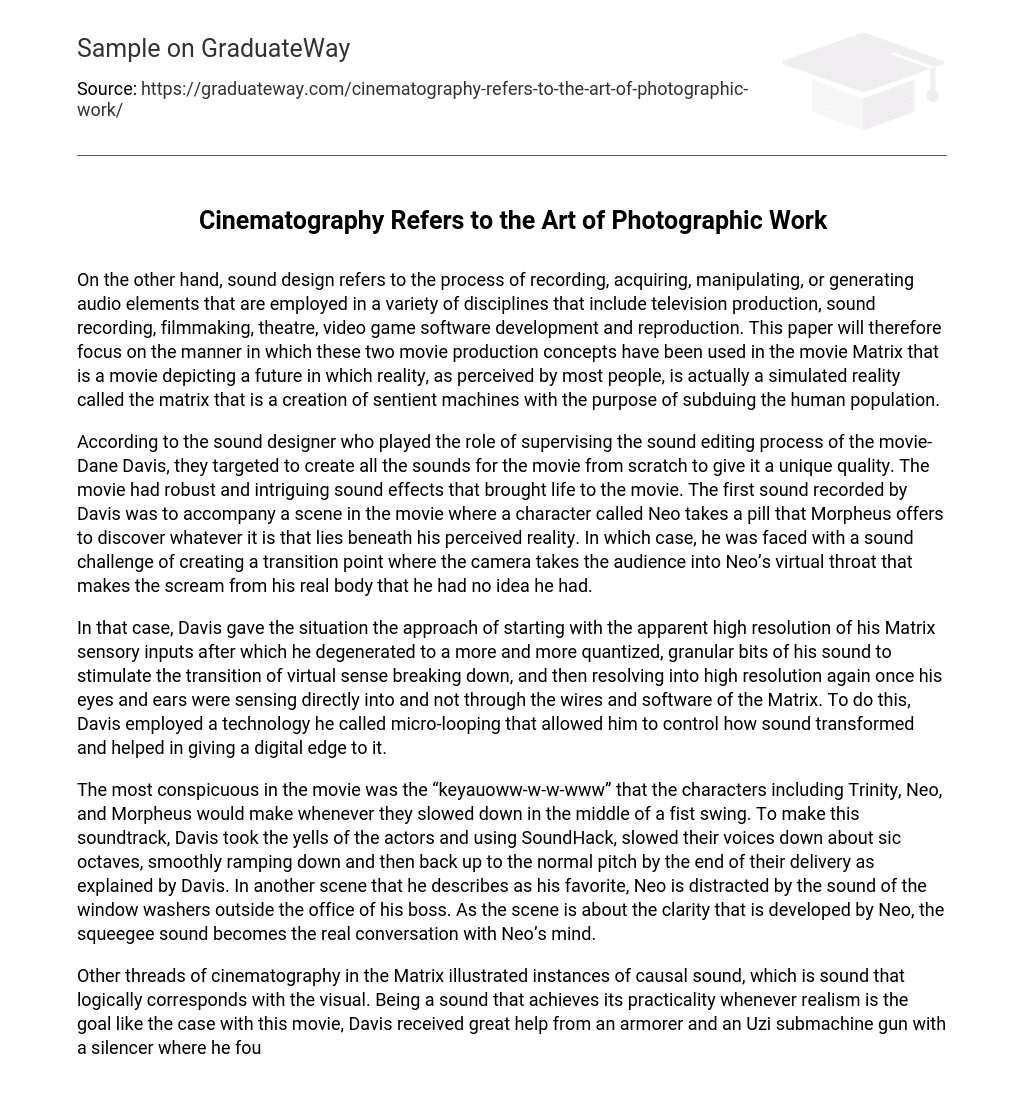On the other hand, sound design refers to the process of recording, acquiring, manipulating, or generating audio elements that are employed in a variety of disciplines that include television production, sound recording, filmmaking, theatre, video game software development and reproduction. This paper will therefore focus on the manner in which these two movie production concepts have been used in the movie Matrix that is a movie depicting a future in which reality, as perceived by most people, is actually a simulated reality called the matrix that is a creation of sentient machines with the purpose of subduing the human population.
According to the sound designer who played the role of supervising the sound editing process of the movie- Dane Davis, they targeted to create all the sounds for the movie from scratch to give it a unique quality. The movie had robust and intriguing sound effects that brought life to the movie. The first sound recorded by Davis was to accompany a scene in the movie where a character called Neo takes a pill that Morpheus offers to discover whatever it is that lies beneath his perceived reality. In which case, he was faced with a sound challenge of creating a transition point where the camera takes the audience into Neo’s virtual throat that makes the scream from his real body that he had no idea he had.
In that case, Davis gave the situation the approach of starting with the apparent high resolution of his Matrix sensory inputs after which he degenerated to a more and more quantized, granular bits of his sound to stimulate the transition of virtual sense breaking down, and then resolving into high resolution again once his eyes and ears were sensing directly into and not through the wires and software of the Matrix. To do this, Davis employed a technology he called micro-looping that allowed him to control how sound transformed and helped in giving a digital edge to it.
The most conspicuous in the movie was the “keyauoww-w-w-www” that the characters including Trinity, Neo, and Morpheus would make whenever they slowed down in the middle of a fist swing. To make this soundtrack, Davis took the yells of the actors and using SoundHack, slowed their voices down about sic octaves, smoothly ramping down and then back up to the normal pitch by the end of their delivery as explained by Davis. In another scene that he describes as his favorite, Neo is distracted by the sound of the window washers outside the office of his boss. As the scene is about the clarity that is developed by Neo, the squeegee sound becomes the real conversation with Neo’s mind.
Other threads of cinematography in the Matrix illustrated instances of causal sound, which is sound that logically corresponds with the visual. Being a sound that achieves its practicality whenever realism is the goal like the case with this movie, Davis received great help from an armorer and an Uzi submachine gun with a silencer where he found creative ways to record and exaggerate the sounds of bullet used in the movie. Moreover, reduced and causal sounds have been combined in an innovative way by Davis in the widely physical martial arts scenes through the incorporation of meat hits and animal vocals to create composite body-hit and whoosh sounds.





